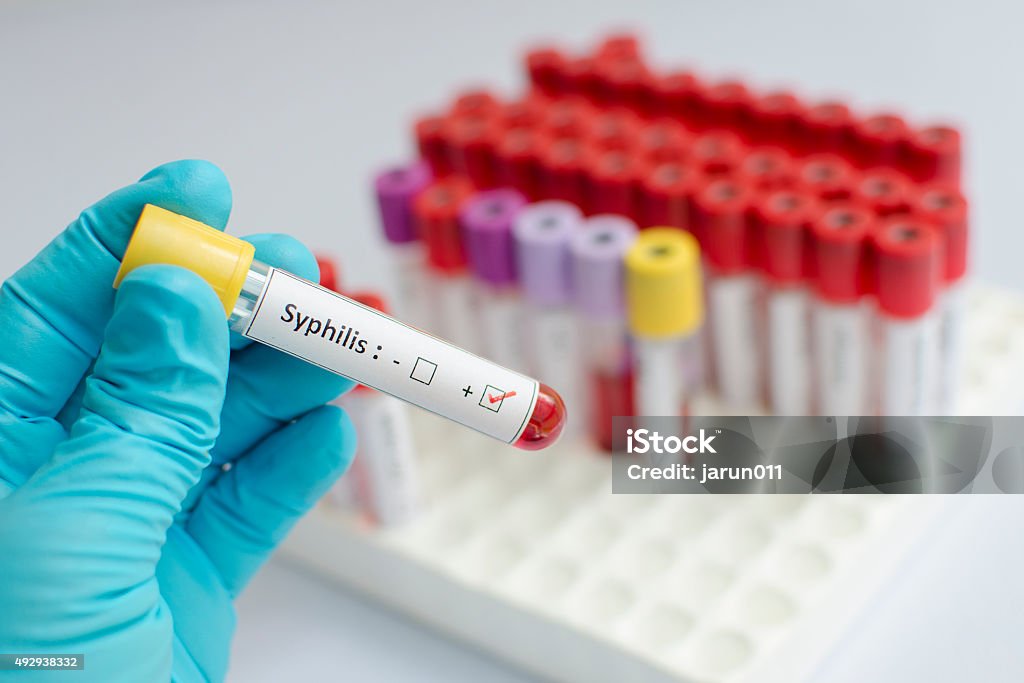As an Amazon Associate, I earn from qualifying purchases
Treponema pallidum is a bacterium notorious for causing a range of diseases in humans. From its characteristic shape to its detection methods, understanding this microorganism is crucial for effective diagnosis and treatment. In this comprehensive guide, we delve into the world of Treponema pallidum, covering its characteristics, associated diseases, diagnostic methods, and more.
Page Contents
ToggleWhat is Treponema pallidum?
Treponema pallidum is a spirochete bacterium responsible for causing syphilis, a sexually transmitted infection (STI) with a complex and varied clinical presentation. This bacterium exhibits a distinctive corkscrew shape under a microscope, characteristic of the spirochete family.
The bacterium is highly adapted to survive and persist within the human body, primarily transmitted through sexual contact or from mother to child during pregnancy (congenital syphilis). Despite being treatable with antibiotics, syphilis remains a global health concern due to its prevalence and potential complications if left untreated.
Significance of Understanding Treponema pallidum:
Understanding Treponema pallidum is crucial for several reasons. Firstly, it aids in the diagnosis and management of syphilis and other related infections. Secondly, insights into its biology and pathogenesis contribute to the development of improved diagnostic tools, treatment strategies, and preventive measures. Additionally, studying Treponema pallidum sheds light on the intricate interactions between microbes and the human host, advancing our knowledge of infectious diseases.
Implications for Public Health:
The prevalence of syphilis underscores the importance of public health interventions aimed at prevention, screening, and treatment. Education regarding safe sexual practices, regular testing for STIs, and access to healthcare services are pivotal in controlling the spread of syphilis and mitigating its impact on individuals and communities.
Understanding Treponema Pallidum Disease
Fortunately, Treponema pallidum disease, including syphilis, is treatable with antibiotics, particularly penicillin. Early detection through screening and timely intervention can halt the progression of the disease and prevent complications. However, adherence to treatment regimens and follow-up care are essential to ensure complete eradication of the bacterium from the body.
Prevention Measures: Preventing the transmission of Treponema pallidum disease requires a multifaceted approach. Promotion of safe sexual practices, including consistent condom use and reducing the number of sexual partners, remains paramount in reducing the risk of infection. Routine screening for sexually active individuals, particularly those at higher risk, enables early detection and treatment. Additionally, access to comprehensive sexual health education and healthcare services facilitates informed decision-making and empowers individuals to take charge of their reproductive health. The shape of Treponema pallidum is one of its defining characteristics. As a spirochete bacterium, it exhibits a unique spiral or helical shape, resembling a tightly wound corkscrew.

This distinctive morphology allows it to move efficiently through various tissues and evade the host’s immune system, contributing to its pathogenicity. The spiral shape of Treponema pallidum is maintained by endo flagella, also known as periplasmic flagella, which are located within the periplasmic space of the bacterium. These flagella enable motility, facilitating the bacterium’s ability to penetrate tissues and disseminate throughout the body.
Treponema pallidum Gram Staining Techniques
The Gram stain, devised by Danish bacteriologist Hans Christian Gram in 1884, is a cornerstone technique in microbiology. It classifies bacteria into Gram-positive and Gram-negative based on their cell wall composition. However, Treponema pallidum defies easy categorization due to its atypical cell wall structure.
The Challenge of Gram Staining Treponema pallidum:
Traditional Gram staining protocols often fail to adequately stain Treponema pallidum due to its delicate and thin cell wall. This challenge necessitates modifications to conventional staining procedures, including prolonged staining times, specialized staining reagents, and meticulous technique.
Enhanced Techniques for Treponema pallidum Gram Stain:
Recent advancements in staining methodologies, such as the Dieterle silver impregnation technique and immunofluorescence staining, have improved the detection of Treponema pallidum in clinical samples. These enhanced techniques offer greater sensitivity and specificity, aiding in the accurate diagnosis of syphilis.
Treponema Pallidum Test
Syphilis, a sexually transmitted infection caused by the bacterium Treponema pallidum, presents significant public health challenges globally. Early detection and treatment are crucial for effective management and prevention of complications. One of the primary methods for diagnosing syphilis is through the Treponema pallidum test, a vital tool in healthcare settings.

What is the Treponema pallidum Test?
The Treponema pallidum test, also known as syphilis serology, is a diagnostic test used to detect antibodies produced by the body in response to Treponema pallidum infection. It plays a central role in confirming the presence of syphilis and assessing the stage of the disease.
Importance of the Treponema pallidum Test:
- Early Detection: Detecting syphilis in its early stages is critical for prompt treatment and preventing the progression of the disease to more advanced stages.
- Screening: The Treponema pallidum test is used for routine screening in high-risk populations, including sexually active individuals, pregnant women, and those with a history of sexually transmitted infections.
- Monitoring Treatment: Following a positive diagnosis, the Treponema pallidum test helps monitor the effectiveness of treatment and determine the need for additional therapy.
- Public Health Surveillance: Data from Treponema pallidum testing contributes to public health surveillance efforts, enabling healthcare authorities to track the prevalence of syphilis and implement targeted interventions.
Types of Treponema pallidum Tests:
- Non-Treponemal Tests: These tests detect antibodies that react with substances released by damaged host cells during syphilis infection, such as the Venereal Disease Research Laboratory (VDRL) test and the Rapid Plasma Reagin (RPR) test.
- Treponemal Tests: These tests detect antibodies specifically directed against Treponema pallidum antigens, including the Treponema pallidum particle agglutination assay (TPPA), fluorescent treponemal antibody absorption (FTA-ABS) test, and enzyme immunoassays (EIA).
Treponema Pallidum Shape Revealed
In the realm of microbiology, the shape of bacterial organisms often holds key insights into their behavior, pathogenicity, and even treatment strategies. One such intriguing bacterium is Treponema pallidum, notorious for causing syphilis. Understanding the Treponema pallidum shape is fundamental to comprehending its biology and devising effective diagnostic and therapeutic approaches.
The Enigmatic Treponema Pallidum Shape: Treponema pallidum is a spirochete bacterium, characterized by its distinctive helical shape. Under the microscope, it appears as a thin, tightly coiled spiral, resembling a corkscrew. This unique morphology contributes to its motility and ability to penetrate various tissues in the human body.
Significance of Recognizing Treponema Pallidum Shape:
-
Diagnostic Clues: Identifying the characteristic spiral shape of Treponema pallidum is pivotal for accurate diagnosis of syphilis. Microscopic examination of clinical specimens, such as tissue samples or fluid aspirates, may reveal the presence of these spiral-shaped bacteria, aiding in the confirmation of infection.
-
Pathogenesis Insights: The helical morphology of Treponema pallidum facilitates its movement through host tissues, contributing to its invasive nature. By understanding its shape and motility mechanisms, researchers gain valuable insights into the pathogenesis of syphilis, informing the development of targeted therapeutic interventions.
-
Treatment Strategies: The unique shape and motility of Treponema pallidum pose challenges for conventional antibiotic therapies. Devising treatment strategies that effectively target and eradicate these spiral-shaped bacteria is essential for successful management of syphilis and prevention of disease complications.
Advancements in Visualizing Treponema Pallidum Shape: Technological advancements, such as high-resolution microscopy and electron microscopy, have revolutionized the visualization of Treponema pallidum shape. These imaging techniques offer detailed insights into the ultrastructure of the bacterium, shedding light on its complex morphology and interactions with host tissues.
Conclusion
Treponema pallidum remains a significant public health concern due to its role in causing various diseases, including syphilis and related infections. Understanding the characteristics, detection methods, and clinical manifestations associated with this bacterium is essential for effective diagnosis, treatment, and prevention strategies. Through continued research and public health efforts, addressing Treponema pallidum infections can lead to improved outcomes and reduced disease burden globally.
As an Amazon Associate, I earn from qualifying purchases






